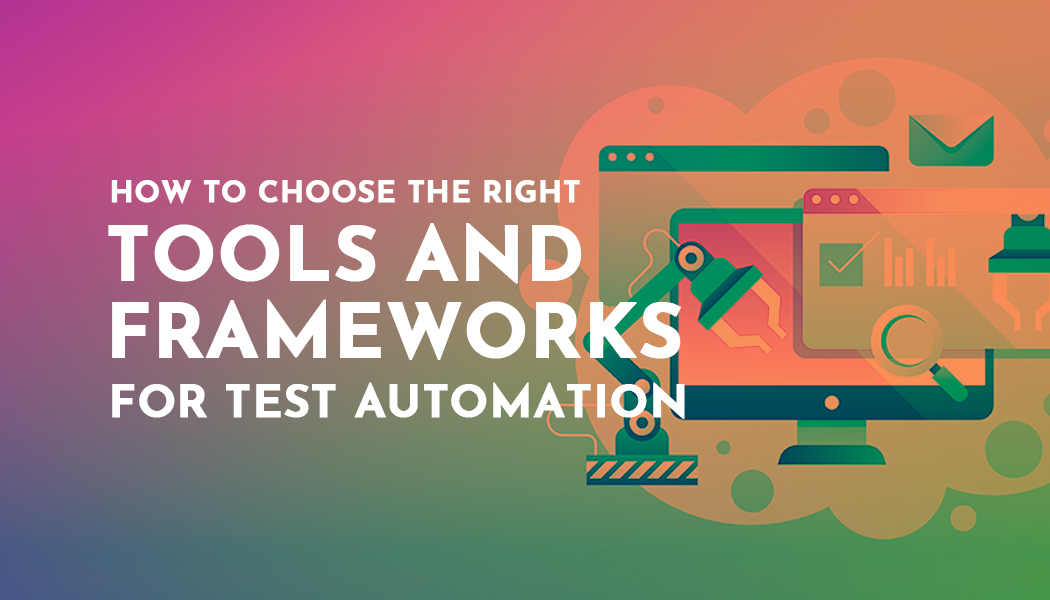How to Choose the Right Tools and Frameworks for Test Automation: Your Expert Guide
Selecting the appropriate tools and frameworks is a pivotal decision in the test automation process of software testing. It determines the efficiency of testing activities, impacts the quality of deliverables, and influences the speed to market. Choices made in this phase are foundational, affecting the robustness, maintainability, and scalability of automated tests. Thus, evaluating the specific needs of a project should guide the decision-making process, aligning the chosen test automation framework with project requirements, technology stack, and team expertise.
Incorporating a test automation framework that fits well with the established testing processes can lead to significant benefits. Not only do these frameworks help reduce manual effort through reuse and better organization, but they also ensure consistency and generate timely feedback for development teams. A deep dive into Functionize guide to testing software tools provides insights into various automation tools, outlining their capabilities and how they fit into different testing scenarios.
Key Takeaways
- Choosing tools should be guided by project-specific needs.
- A suitable framework can enhance testing efficiency and consistency.
- Adequate implementation optimizes overall test automation effectiveness.
Assessing Your Automation Needs and Framework Options
When initiating an automation project, one's primary focus should be on selecting a framework that aligns with the specific needs of their software, is capable of fulfilling business requirements, and ensures an efficient and effective testing process.
Understanding Different Framework Types
Types of test automation frameworks vary widely, each with its strengths. The linear scripting framework is straightforward and involves writing test scripts sequentially. For more complex needs, the data-driven framework allows for testing to be data-centric, separating test scripts from test data. Meanwhile, the keyword-driven framework focuses on the use of keywords to represent actions, providing non-developers an easier entry point to automate tests. The library architecture testing framework promotes reusability by having common functions in libraries. Lastly, a hybrid framework combines elements of other frameworks to benefit from a tailored approach that can handle diverse test scenarios.
Evaluating Framework Characteristics
- : A framework should enable testers to write automation scripts with minimal effort.
- : The chosen framework should improve test coverage and defect detection.
- : Look for features like modular test scripts or shared step definitions that can be reused across different test cases.
- : Frameworks need to withstand changes in the application and test environments with minimal maintenance.
- Resource Management: Being able to manage resources such as test data and object identifiers without complicating the test scripts.
- Tool Compatibility: The choice of automation testing tools should be dictated by how well they integrate with the chosen framework.
Aligning Frameworks With Project Requirements
One must ensure the chosen framework supports the operating systems and devices under test; this is particularly crucial for applications that are meant to run on multiple mobile app platforms. Test data management capabilities should align with the nature of the data the application handles. Moreover, test coverage is another aspect where framework choice can play a critical role, ensuring all business-critical paths are tested effectively. Lastly, the selected framework must suit both the technical aspects of the project and the business requirements, bridging the gap between what needs to be tested and how it will be tested.
Implementing and Optimizing Test Automation
When implementing and optimizing test automation, one must carefully consider their automation strategy to align it with business value, factor in budget constraints, and adhere to coding standards to ensure consistent results across various platforms like Android and iOS.
Fostering Continuous Testing and Quality
To achieve a high level of quality in software testing, it is imperative to foster an environment of continuous testing. This approach integrates testing into the development cycle, rather than treating it as a separate phase. It relies on a robust automation strategy that includes multiple layers of testing: unit testing, integration testing, and cross-browser testing. Tools provide the necessary capabilities to automate these processes, ensuring that every change in the codebase is immediately and thoroughly tested.
- Unit Testing: At the lowest level, unit tests catch individual component bugs.
- Integration Testing: Checks if different modules operate well together.
- Cross-Browser Testing: Ensures consistency across different web browsers.
Continuous testing leverages frameworks such as TestComplete and Katalon Studio, making it easier to run automated tests frequently and consistently. By automating such tests, teams reduce manual intervention and allow for quicker feedback loops, driving a higher return on investment (ROI).
Adapting to Evolving Testing Needs
Software testing must adapt to changing application features and varying testing goals. Hence, optimizing test automation involves creating an abstraction layer that allows the testing process to be more resilient to changes in the application under test. Frameworks like Cypress and Playwright are designed to handle modern web applications with ease, hence they cater to evolving needs efficiently.
- Abstraction Layer: Maintains consistency as app features evolve.
- Multiple Test Scripts: Can run diverse test scenarios concurrently.
By utilizing coding standards and practices from Test-Driven Development (TDD) and Behavior-Driven Development (BDD), teams can produce code that is clean, maintainable, and reusable. These principles facilitate quicker adaptation to both new feature testing and tests for existing functionalities.
Moreover, community support for open-source tools such as Selenium or Appium can be invaluable for teams to keep abreast of best practices and resolve issues quickly. When evaluating the cost versus value, Fortune 500 companies tend to prefer solutions that promote code reusability across tests, thereby minimizing the need to rewrite tests for each new feature or platform.
Conclusion
Selecting the appropriate test automation tools and frameworks is critical for maximizing the efficiency and effectiveness of testing efforts. One should first list project requirements to ensure that the chosen solution aligns with the needs and complexities of the software project. Considering factors such as ease of integration, language support, and framework adaptability allows teams to build robust testing procedures. As the landscape of software development evolves, the ability to adapt to changing technologies is essential for maintaining a sustainable and scalable automation strategy.




